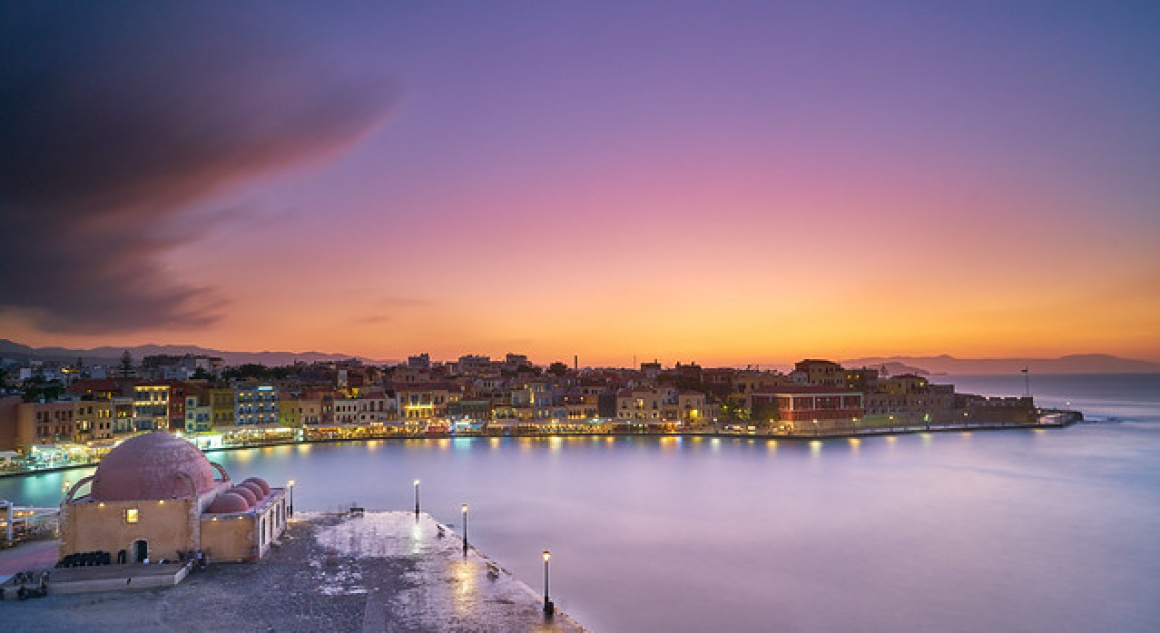Overview
As the sun sets over Chania's harbour, golden light dances on gentle waves and stone docks. The Old Town of Chania (the second-largest city in Crete after Heraklion) is often nicknamed the "Venice of the East", and for good reason. Its 14th-century Venetian Harbour, with a postcard-perfect lighthouse and a panorama of pastel facades, feels frozen in time. Yet Chania is also vibrantly alive – a multicultural port city where Venetian mansions, Ottoman minarets, and bustling Cretan markets coexist in a unique blend. Wandering these atmospheric alleys is like walking through layers of history, each corner revealing a new story or a friendly “yasas” (hello) from a local shopkeeper.
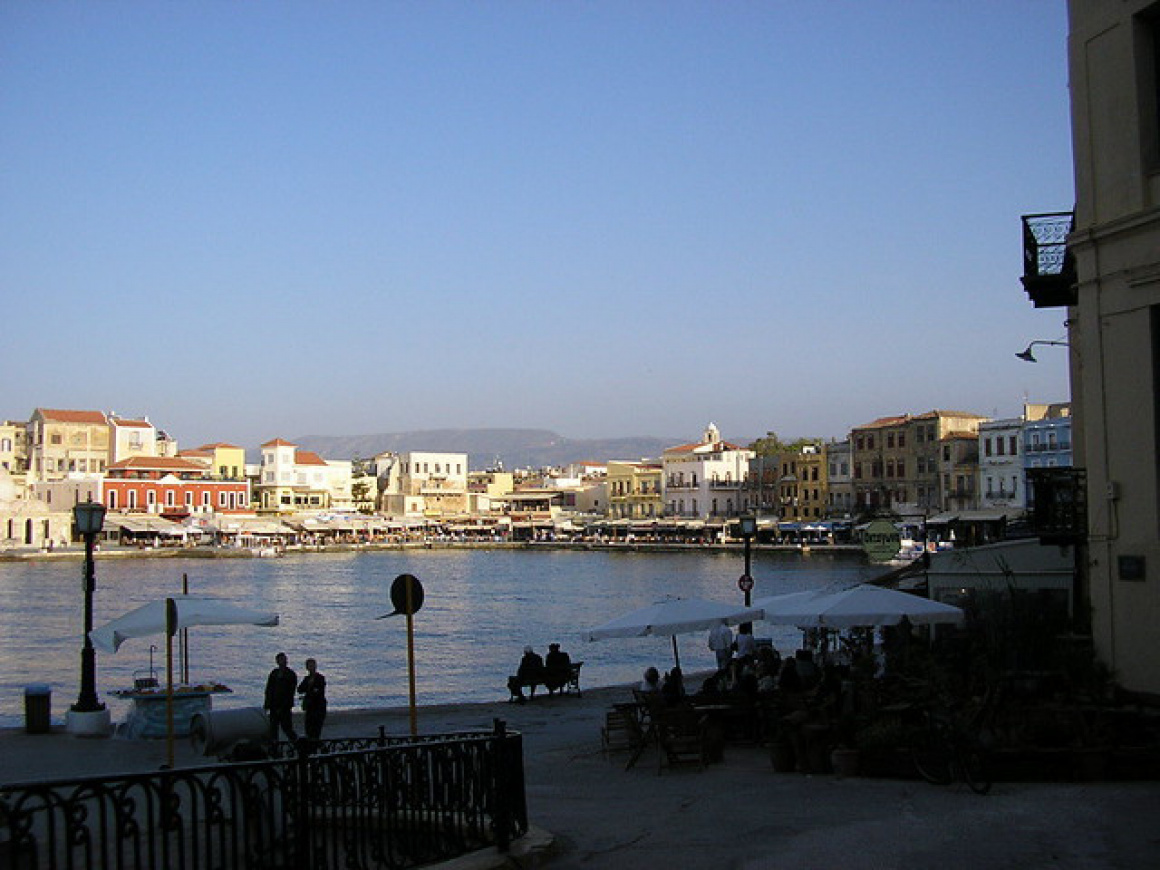
 'Chania harbour from Maritime Museum' - Attribution: goforchris
'Chania harbour from Maritime Museum' - Attribution: goforchrisChania's story stretches back to the Minoans (ancient Kydonia once stood here) and has seen Romans, Venetians, and Ottomans leave their mark. The Venetian Harbour itself was constructed between 1320 and 1356 by the Venetians, who ruled Crete from 1204–1669. Built as a crucial maritime hub and defense against pirates, the harbour set the stage for Chania's seafaring prosperity. In 1645, the city fell to the Ottoman Empire, and new rulers added mosques, bathhouses, and Eastern flair to the skyline. Today, the juxtaposition of Venetian and Ottoman architecture is Chania's signature: elegant stone arches and ornate wooden balconies above narrow cobbled lanes. One iconic landmark at the harbour’s edge is the lighthouse, originally built by the Venetians in the 16th century and later reconstructed in its present form by Egyptian craftsmen in the early 19th century. Across the water stands the sturdy Firkas Fortress, a Venetian fort built to guard the port entrance; it now houses the Maritime Museum, where you can explore Crete's nautical history amid old cannons and ship models. On the harbour’s eastern side, the pink-domed Mosque of the Janissaries (1645) – the oldest Ottoman building in Crete – still watches over the promenade, now repurposed as an art gallery. Each step in the Old Town unveils such layers: a fragment of ancient city wall here, a Venetian well there, an inscription in Arabic script above a door. Take your time absorbing this history – perhaps with a creamy Greek coffee at a café tucked under a 500-year-old archway.
Chania invites exploration, rewarding the curious at every turn. Some top experiences not to miss include:
Stroll the Old Venetian Harbour
Walk along the quays to the lighthouse at the harbour mouth for stunning views of the Old Town and the sea. Imagine the era when this harbour bustled with Venetian galleys – its construction between the 14th and 16th centuries ensured safe anchorage and defense.
Explore the Old Town Alleys
Wander through the maze of the Kasteli and Splantzia districts. You'll find charming shops selling Cretan handicrafts (leather, ceramics, textiles) and tavernas fragrant with herbs and grilling meats. In Splantzia Square, an old plane tree marks the spot of an ancient church-turned-mosque, complete with a lone minaret. Nearby, seek out Agios Nikolaos Church, uniquely featuring both a bell tower and a minaret – a symbol of Chania's mixed heritage.
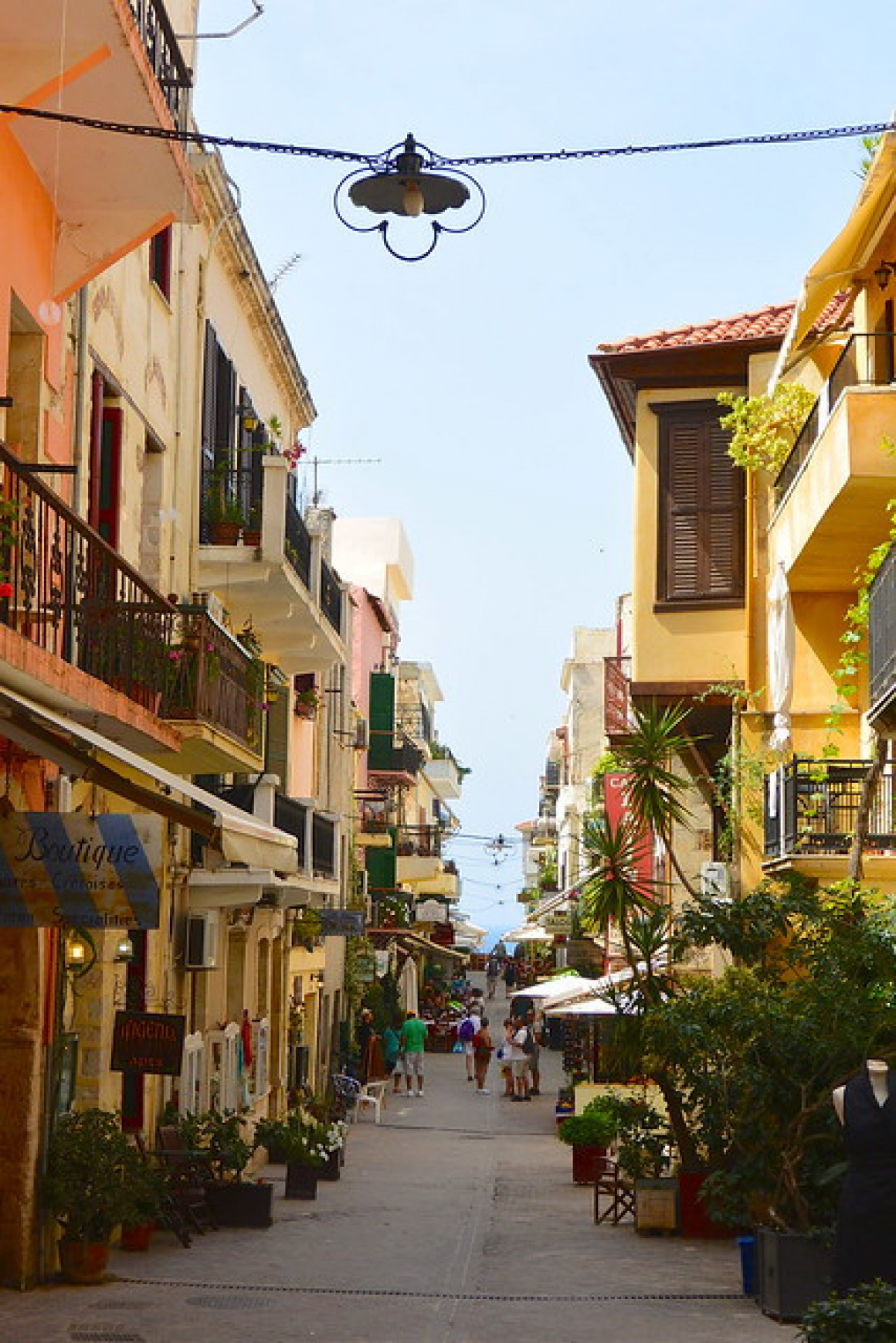
 'Crete 2013: Chania' - Attribution: Rev Stan
'Crete 2013: Chania' - Attribution: Rev StanVisit the Nautical and Archaeological Museums
At Firkas Fortress, the Maritime Museum of Crete offers fascinating exhibits of model ships, historic diving equipment, and WWII memorabilia. In contrast, the Archaeological Museum (housed in a former Venetian monastery) displays Minoan and Roman artifacts from the region – think clay tablets, delicate gold jewelry, and the famous clay figurine of a Minoan priestess.
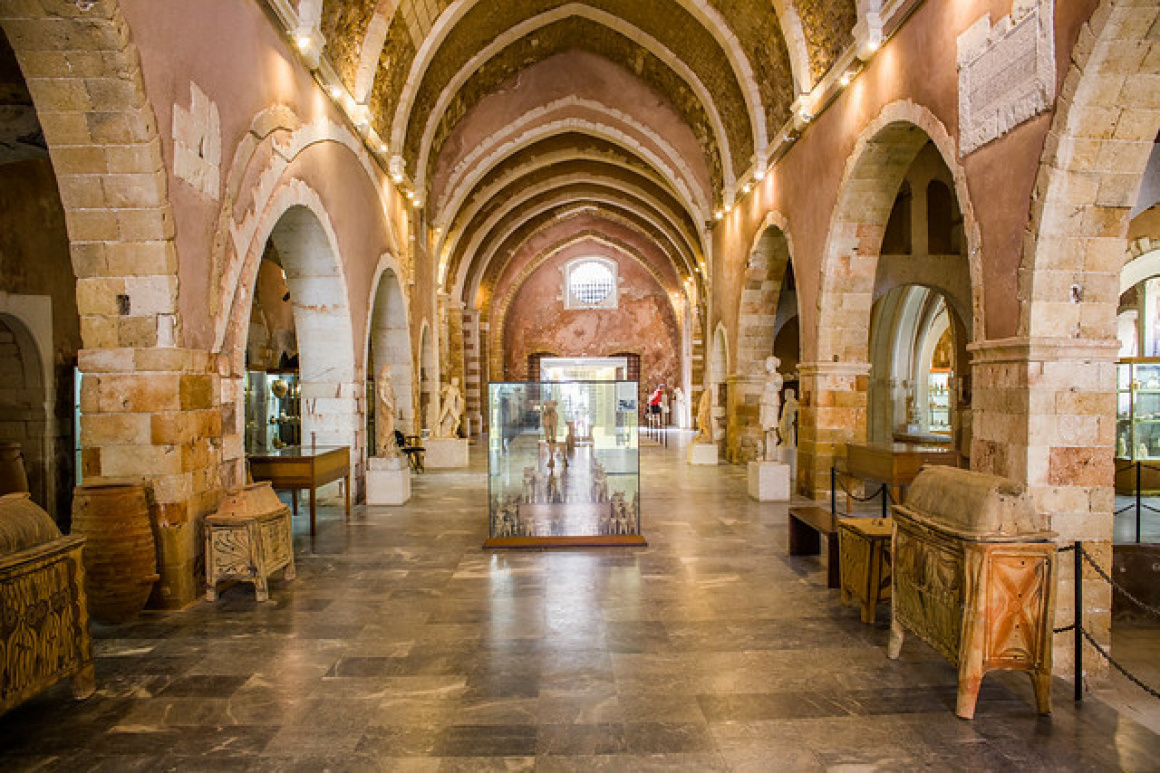
 'Chania' - Attribution: Shadowgate
'Chania' - Attribution: ShadowgatePeople-Watch at the Municipal Market (Agora)
This covered market hall from 1913 is shaped like a cross and brims with local life. Browse stalls of fresh produce, cheeses, and olives. Sample Cretan graviera cheese or honey-drenched pastries. It's a perfect spot to chat with vendors and feel the pulse of everyday Chania.
Relax at a Seafront Taverna
Pick a restaurant on the harbour and enjoy a lingering meal. Try local specialties like dakos (barley rusk salad with tomatoes and feta) or fresh seafood straight from the Aegean. As you dine, street musicians often stroll by, serenading with Cretan lyra music. By night, the harbour's tavernas and bars fill up with both travellers and locals – offering a lively nightlife scene under the stars.
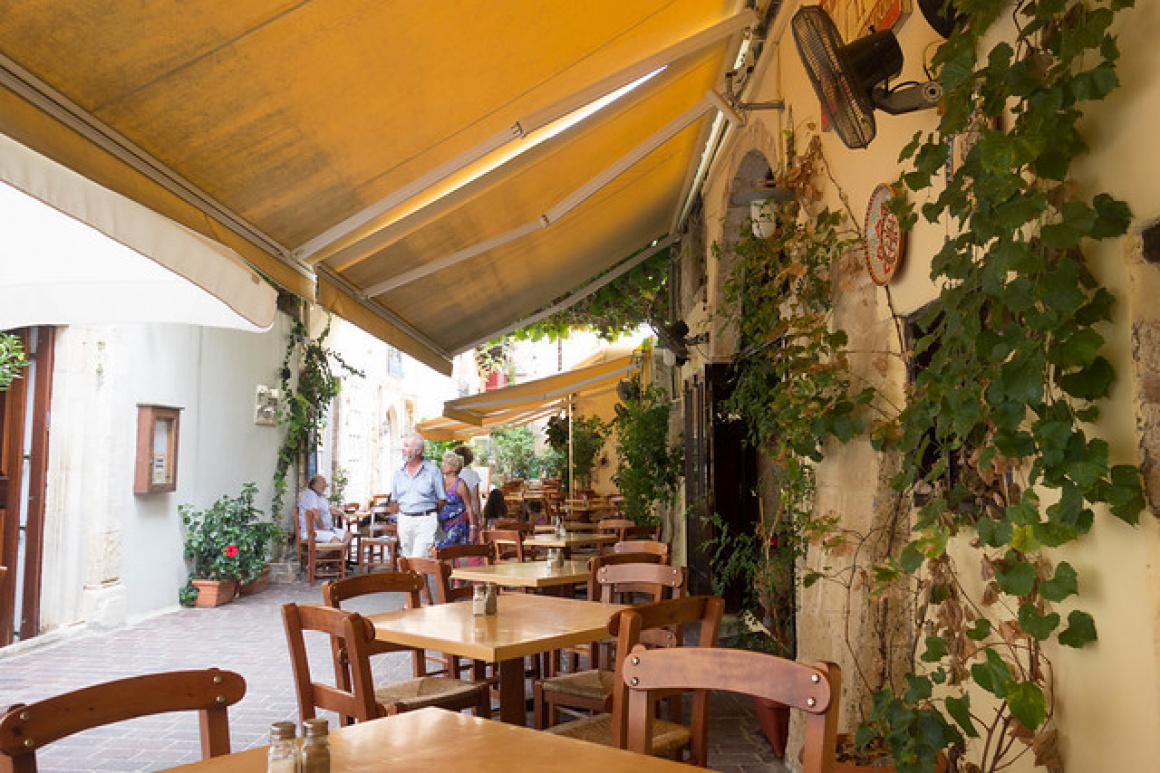
 'Chania' - Attribution: Kent Wang
'Chania' - Attribution: Kent WangChania's charm is best experienced without a strict agenda. Start your mornings early with a stroll while the town is still quiet – you might catch fishermen bringing in the day's catch at the harbour. At midday, especially in summer, duck into a cool museum or enjoy a siesta as the sun beats down. Evenings are magical in Chania: join the volta (evening promenade) along the waterfront, when locals dress up and take a leisurely stroll, greeting friends along the way. Venture a bit beyond the tourist trail by exploring the backstreets: you'll find vine-draped lanes where children play and elders sit gossiping on doorsteps. Chania is also a gateway to western Crete's wonders – from here you can plan day trips to places like Elafonisi Beach or the Samaria Gorge. For instance, many travellers base in Chania to take the early morning bus to Samaria for the famous gorge hike, returning by evening to enjoy a well-earned meal by the harbour.
If you have a car, use the municipal parking outside the Old Town, as inner streets are narrow and mostly pedestrianized. Better yet, explore on foot – the Old Town is compact. Also, consider visiting the harbour at night and early morning as well; its atmosphere changes beautifully – from the quiet lapping of water at dawn to the convivial bustle of dinner time.
Chania offers a wide range of accommodations, from boutique heritage hotels to budget-friendly guesthouses, all imbued with Old Town character. For example, Casa Delfino Hotel & Spa is a top luxury pick set in a 17th-century Venetian mansion – a stay here means marble courtyards and a rooftop terrace overlooking the harbour. Another beloved option is the Porto Veneziano Hotel, right on the waterfront, which boasts modern comfort, harbour-view balconies, and a renowned Cretan breakfast to fuel your sightseeing. If you prefer a quieter charm, seek out family-run inns in the backstreets – there are charming guesthouses with flower-filled courtyards that offer an authentic welcome. Many budget travellers enjoy the simple rooms at places like Pension Eva or Hotel Ideon, which provide warmth and cleanliness a short walk from all the sights. Wherever you stay, try to spend at least a couple of nights in Chania. Waking up within the Old Town’s ancient walls, with church bells tolling and the smell of fresh bread in the air, allows you to truly soak in the city's soul. For a broader look at lodging around the island, see our Where to Stay guide.

 'Greece, Crete, Chania' - Attribution: Epsilon68 - Street and Travel Photography
'Greece, Crete, Chania' - Attribution: Epsilon68 - Street and Travel Photography
